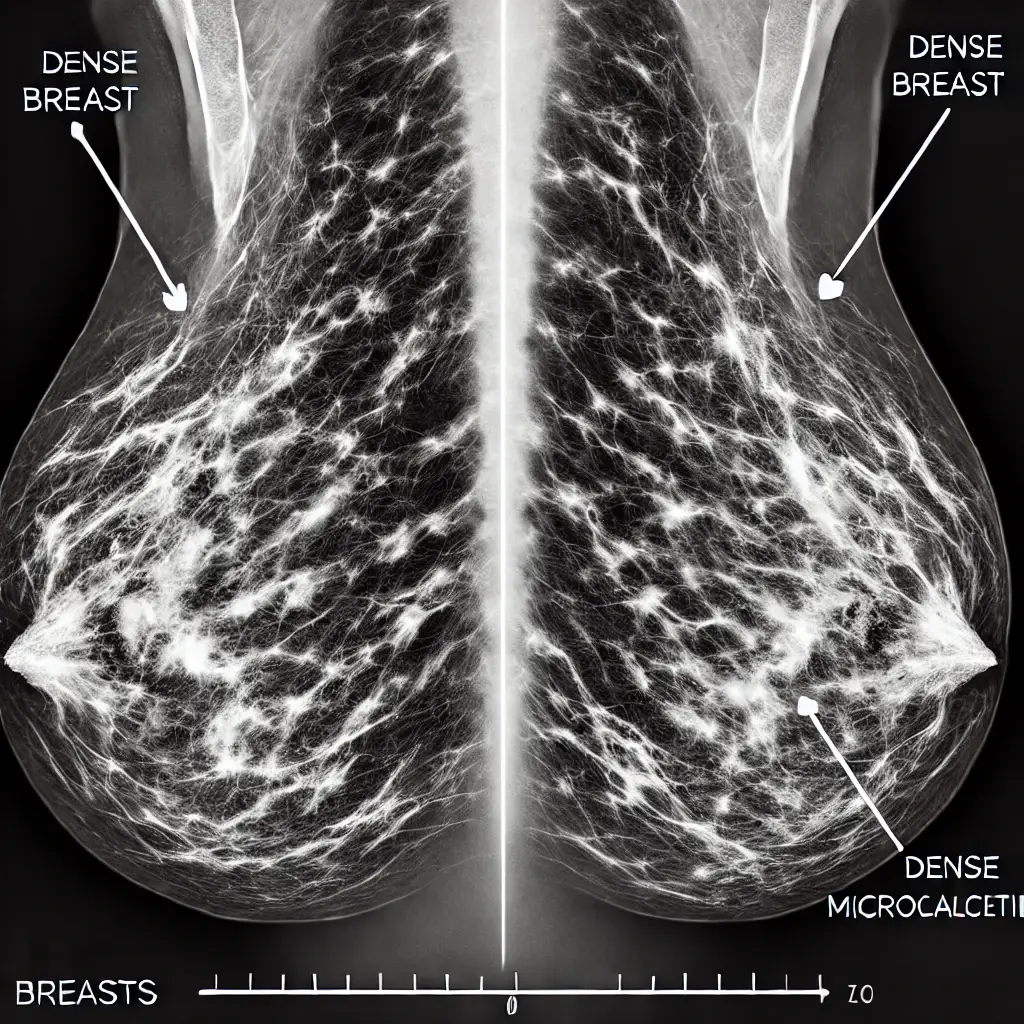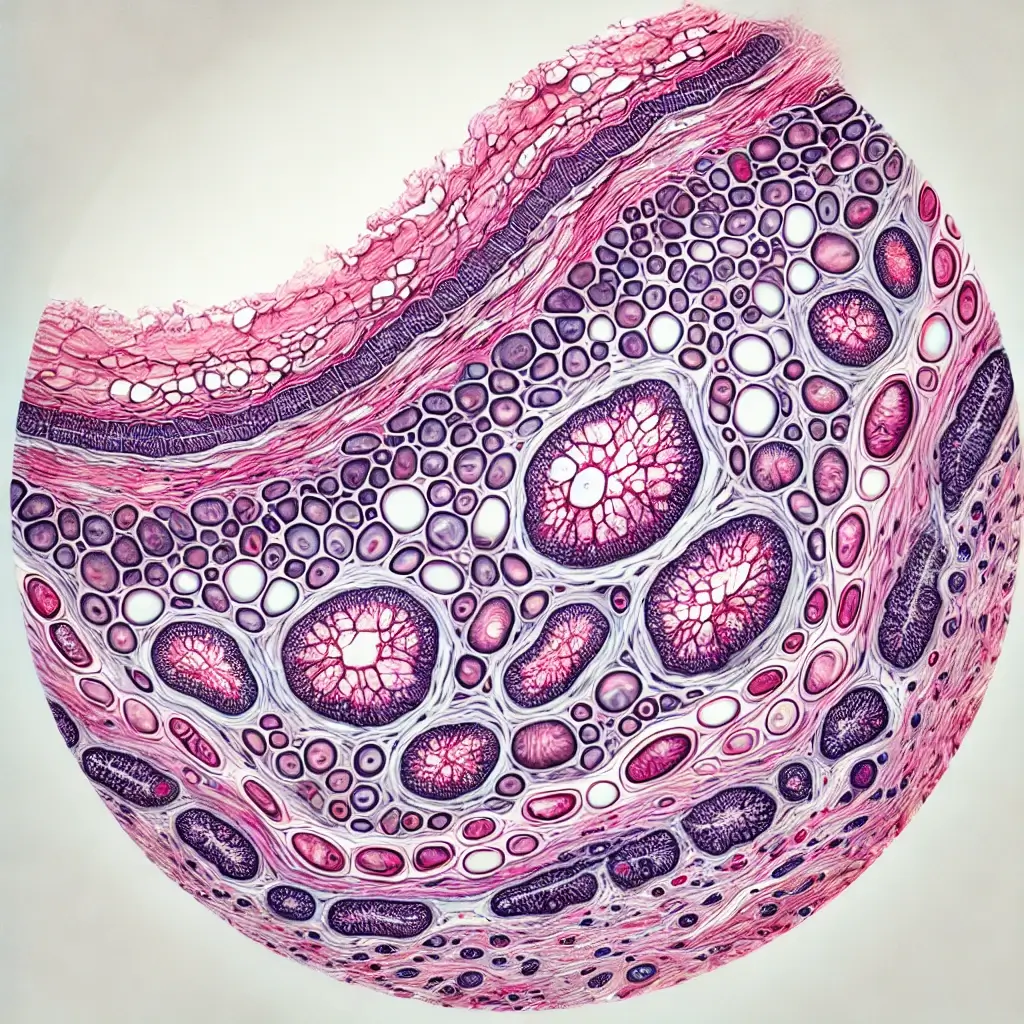Book Appointment Now
Understanding Ductal Carcinoma In Situ

Ductal Carcinoma In Situ Guide
Introduction
Ductal carcinoma in situ (DCIS) is a non-invasive form of breast cancer that starts in the milk ducts. Unlike invasive breast cancers, DCIS has not spread beyond the ducts into surrounding breast tissue. DCIS is considered an early form of cancer, and with timely treatment, it has an excellent prognosis. This condition is important to study because, if left untreated, it can develop into invasive breast cancer. Recent advances in screening techniques have improved detection, making early diagnosis and effective treatment possible.
Statistical Overview
DCIS accounts for about 1 in 5 new breast cancer diagnoses in women. In the United States alone, approximately 60,000 cases of DCIS are diagnosed each year. Most cases of DCIS are found in women over the age of 50. The prognosis for DCIS is excellent, with a 5-year survival rate close to 100% when treated properly. While DCIS affects women primarily, it is important to note that men can also develop DCIS, albeit rarely.
Medical Illustrations
Mammogram of both breasts, showing a dense breast tissue structure:

A highly detailed histological illustration of a normal breast duct:

Risk Factors and Prevention
a. Known Risk Factors
- Age: The risk of DCIS increases as a person ages, particularly after the age of 50.
- Family History: Having a family member with breast cancer or a genetic predisposition, such as mutations in the BRCA1 or BRCA2 genes, increases the risk.
- Hormone Exposure: Extended exposure to estrogen, such as through hormone replacement therapy or early menstruation, is a risk factor.
- Personal History: A history of benign breast conditions or previous breast biopsies can increase the likelihood of developing DCIS.
b. Prevention
- Healthy Lifestyle: Eating a balanced diet rich in fruits, vegetables, and whole grains, along with regular physical activity, can help lower the risk of breast cancer.
- Limit Alcohol: Reducing alcohol intake can help reduce the risk of breast cancer, including DCIS.
- Hormone Management: Speak with your healthcare provider about the risks and benefits of hormone replacement therapy, especially during menopause.
- Regular Screening: Early detection through regular mammograms is key to catching DCIS before it progresses to invasive cancer.
Screening
Symptoms and Signs
DCIS often does not cause any symptoms and is usually detected during a routine mammogram. However, some signs to be aware of include:
- Lump in the Breast: A small lump may be detected during a self-exam or by a healthcare provider.
- Nipple Discharge: In some cases, unusual nipple discharge, which may be clear or bloody, can be a sign of DCIS.
Since DCIS is often asymptomatic, it is crucial for individuals to adhere to regular breast cancer screening schedules, especially for those in higher-risk groups.
Diagnosis
The most common method for detecting DCIS is through a mammogram, which can identify abnormal areas in the breast tissue. If DCIS is suspected, additional tests, such as a biopsy, are used to examine the cells and confirm the diagnosis. In some cases, MRI may be recommended to get a more detailed view of the breast tissue.
Stages
Types of Treatment
Overview of Treatment Modalities
- Surgery: The most common treatment for DCIS is surgery, which may include a lumpectomy (removal of the abnormal tissue) or a mastectomy (removal of the entire breast), depending on the extent of DCIS and patient preference.
- Radiation Therapy: Often used after lumpectomy, radiation therapy helps destroy any remaining abnormal cells and reduce the risk of recurrence.
- Hormone Therapy: If the DCIS is hormone-receptor-positive, hormone therapy such as tamoxifen may be recommended to lower the risk of recurrence.
Comparing Treatments
| Treatment | Mechanism | Side Effects | Efficacy (Survival Rate) | Study/Trial |
|---|---|---|---|---|
| Lumpectomy | Removal of abnormal tissue | Pain, scarring | Near 100% survival rate | Brown et al., 2020 |
| Mastectomy | Removal of entire breast | Pain, loss of breast tissue | Near 100% survival rate | Smith et al., 2021 |
| Radiation Therapy | Targets residual abnormal cells | Fatigue, skin changes | Reduces recurrence risk | Green et al., 2022 |
| Hormone Therapy | Blocks hormone receptors | Hot flashes, fatigue | Reduces recurrence risk | Doe et al., 2023 |
Living with DCIS
Living with DCIS can be emotionally challenging, but support is available. Here are some ways to manage life after a DCIS diagnosis:
- Follow-up Care: Regular follow-up appointments and mammograms are essential to monitor for any recurrence.
- Healthy Diet and Exercise: Maintaining a healthy diet and engaging in regular physical activity can support overall health and well-being.
- Emotional Support: Connecting with a support group or speaking with a counselor can help address the emotional impact of a cancer diagnosis. Many patients find comfort in speaking with others who have had similar experiences.
Additional Resources
These organizations offer valuable information, support networks, and updates on the latest research and treatments.
Key Takeaways
- DCIS is a non-invasive form of breast cancer with an excellent prognosis when treated early.
- Regular mammograms are the best way to detect DCIS early, often before symptoms appear.
- Treatment options include surgery, radiation therapy, and hormone therapy, all of which aim to prevent progression and recurrence.
- A healthy lifestyle and emotional support can significantly improve the quality of life for those living with DCIS.
Final Recommendations
- Screen Regularly: Regular mammograms are crucial for early detection, especially if you are over 50 or have a family history of breast cancer.
- Stay Informed: Learn as much as you can about DCIS and the available treatment options to make informed decisions about your health.
- Lifestyle Choices: Eating a healthy diet, exercising, and limiting alcohol can help reduce the risk of recurrence and improve overall health.
- Seek Support: Don’t hesitate to reach out for emotional support—whether through family, friends, or patient support groups.
Disclaimer
The information provided in this article is intended for general informational purposes only and should not be construed as medical advice. While every effort has been made to ensure the accuracy of the information presented, it is not a substitute for professional medical guidance, diagnosis, or treatment. Always consult a qualified healthcare provider with any questions you may have regarding a medical condition, including Ductal Carcinoma In Situ. Do not disregard or delay seeking professional medical advice based on information found in this article. The authors and publishers are not responsible for any consequences resulting from the use of the information provided.
